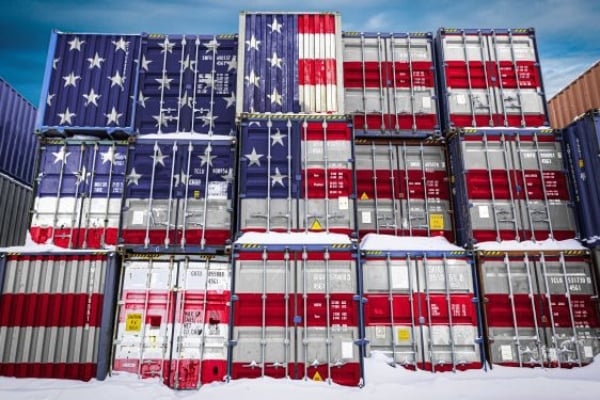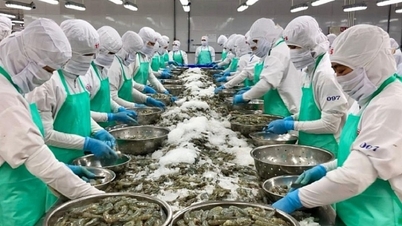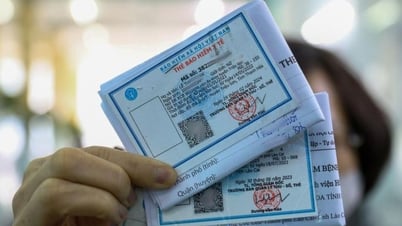The Ministry of Finance has proposed reducing import tariffs on a number of imported goods from the US such as liquefied natural gas (LNG), cars, wood and agricultural products, as the US seeks to minimize risks from possible tariff measures it may impose.
Under the proposal, tariffs on certain automobiles would be reduced from 45-64% to 32%, LNG tariffs from 5% to 2%, and ethanol tariffs from 10% to 5%. In addition, some agricultural products such as apples, frozen chicken, almonds and sweet cherries are also on the list of tax reductions.
Experts say that this import tax reduction proposal is part of the Vietnamese Government's efforts to promote the import of products from the US into Vietnam, reduce Vietnam's trade surplus with the US and avoid falling into the group of subjects subject to new taxes expected to be announced by the US Government on April 2, 2025.
According to Bloomberg, the two criteria for the US to impose reciprocal tariffs include: imposing unfair tariffs on US goods, causing the US to suffer a large trade deficit.
KBSV Research experts believe that Vietnam is facing the risk of being included in the list of countries subject to reciprocal tariffs due to violations of both of the above criteria. However, there is still a possibility that Vietnam will not be included in the US list in this assessment period, but the probability is only 20%.

According to VIS Rating, if Vietnam is subject to tax increases, the main industries that will be affected and most vulnerable are electronics, machinery and equipment, textiles, footwear and wooden furniture.
Meanwhile, assessing the challenges for Vietnamese manufacturers and policymakers, a team of experts from Vietnam Investment Credit Rating Joint Stock Company (VIS Rating) said that Vietnam stands out as one of the countries with a large trade surplus with the US, which the US government has announced will apply reciprocal tariffs based on its "America First" policy. So far, the US has put Canada, China and Mexico, as well as a number of industries such as automobiles, aluminum and steel, on the list of subjects subject to higher import tariffs.
Like the countries mentioned above, Vietnam’s trade surplus with the US has increased significantly over the past decade, driven by strong growth in exports from Vietnam. The US is Vietnam’s largest export destination, accounting for nearly 30% of Vietnam’s total exports in 2024.
Over the years, Vietnam has benefited from foreign investment flows and shifts in global supply chains to become an important manufacturing hub for many multinational corporations.
The US government's recent flurry of tariff announcements underscores the level of uncertainty surrounding the reciprocal tariffs expected to be announced on April 2.
"If Vietnam is subject to increased tariffs, we believe that the main industries that will be affected and most vulnerable are electronics, machinery and equipment, textiles, footwear and wooden products. These industries account for the majority of exports to the US, and many businesses have a high proportion of export revenue dependent on the US market. However, we expect the impact to be differentiated between industries and companies," VIS Rating experts assessed.
Multinational companies that produce electronics and machinery in Vietnam may be better able to respond to tariffs by shifting some of their production or finished goods to other countries. But domestic producers of textiles, footwear and furniture may have fewer options to shift and find alternative markets. Businesses that rely heavily on export sales will face higher costs, fewer orders and poorer operating cash flows.
Among domestic textile and garment manufacturers, Song Hong Garment Company (MSH) has 80% of its export revenue from the US market, TNG (TNG) 46%, Vietnam National Textile and Garment Group (VGT) 35%, Thanh Cong Textile and Garment (TCM) 25%. Savimex (SAV), a large furniture manufacturer, has 50% of its export revenue from the US market.
Over the past few weeks, representatives of the Vietnamese and US governments have met several times to negotiate new trade measures and policy adjustments to deal with potential tariff risks. In addition to reducing import tariffs on US goods, the Vietnamese government has approved new agreements that allow US corporations to operate in Vietnam. For example, the US-based SpaceX has received approval to test its Starlink satellite internet service in Vietnam.
These measures, in theory, should help boost imports of US goods and reduce Vietnam’s trade surplus with the US over time. But VIS Rating experts say that it is the ongoing and upcoming negotiations between the two governments that will determine the extent of the new US tariff policy and how long it will be in place.
Total exports will account for 85% of Vietnam’s GDP in 2024, making exports a key driver of economic growth. Higher tariffs on Vietnamese exports to the US will push up prices for US consumers and reduce demand and sales of Vietnamese products. The decline in export industries will affect domestic consumption, as export businesses employ up to 30% of Vietnam’s workforce.
Increased trade restrictions will also affect Vietnam's ability to attract future investment flows and reduce its prospects of achieving its 8% GDP growth target by 2025.
Minh Thu
Source: https://doanhnghiepvn.vn/kinh-te/chuyen-gia-neu-my-ap-thue-doi-ung-voi-viet-nam-nhieu-nganh-cong-nghiep-bi-anh-huong/20250328030147252



![[Photo] Feast your eyes on images of parades and marching groups seen from above](https://vphoto.vietnam.vn/thumb/1200x675/vietnam/resource/IMAGE/2025/4/30/3525302266124e69819126aa93c41092)
![[Photo] Fireworks light up the sky of Ho Chi Minh City 50 years after Liberation Day](https://vphoto.vietnam.vn/thumb/1200x675/vietnam/resource/IMAGE/2025/4/30/8efd6e5cb4e147b4897305b65eb00c6f)






















































































Comment (0)